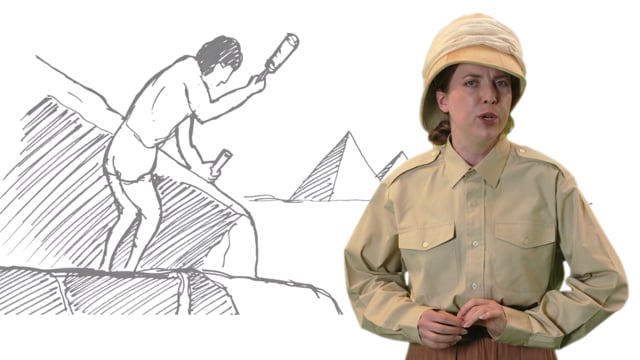This video covers:
How the Egyptians moved those immense stone blocks; fascinating evidence now leads us to believe they were moved on ramps using sand rather than rollers
It took thousands of skilled people to build a pyramid, but how on earth did they move those great pieces of stone, which weighed up to two and a half tons? There’s no evidence to show that Egyptians had ropes and pulleys strong enough to lift the stone, but there is a drawing which was made a thousand years after the Great Pyramid was built, which shows what looks to be a block of stone on a ramp. Now remains of ramps have been found at several pyramid sites in Egypt, so it leads us to believe that a straight ramp was used to raise the stone up to the building level. Recent tests have shown that you can move heavy stone on sand using a sledge but experiments have shown that if you wet the sand, the sledge glides more easily. One of the best pieces of evidence for the moving of heavy stone on a sledge is a drawing from the tomb of Djehutihotep, which shows four rows of forty-three men dragging a statue on a sledge. It also shows men pouring liquid under the sledge, so I’d say this is pretty good evidence to how they moved those huge blocks.
Eras:
Ancient Egypt
Topics:
Buildings & Structures
Character:
Victorian Explorer
Key words:
Ancient Egypt, Egyptian, Egyptians, Evidence, Egyptians, Ropes, Pulleys, Wheels, Stone, archaeology, pyramid, Tomb of Djehutihotep, Djehutihotep, ramp, ramps, sledge, tomb, KS2, Year 3, Year 4, Year 5, Year 6, Key Stage 2 history, KS2, key stage 2, primary, KS2 videos, KS2 clips, KS2 history, KS2 videos, KS2 history film, KS2 history clip, Egypt, Egyptian, Egyptians, Ancient Egypt,


